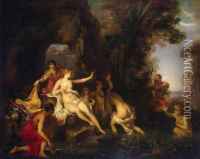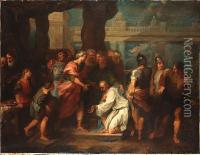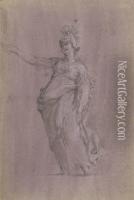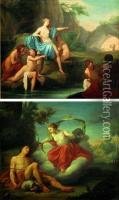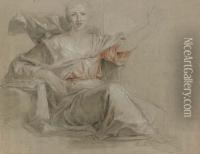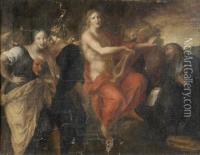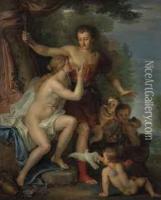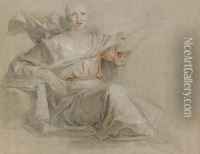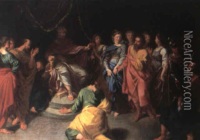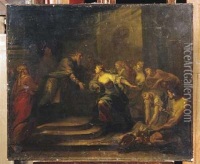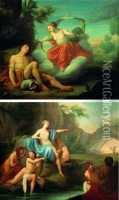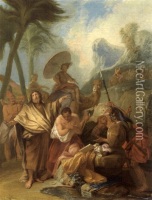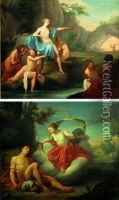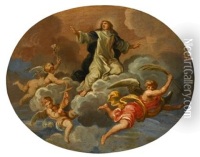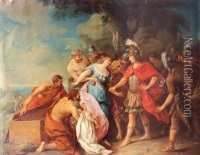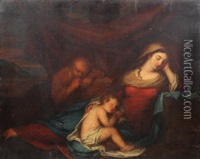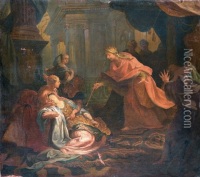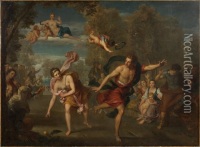Louis Galloche Paintings
Louis Galloche was a prominent French painter and academician during the late 17th and early 18th centuries. Born in Paris, France, in 1670, Galloche's artistic journey began under the tutelage of his father, who was also an artist. His early promise in art led him to study under the renowned French painters Bon Boullogne and Louis de Boulogne. These formative years were crucial in shaping Galloche's artistic style, which blended classical influences with the emerging trends of the French Baroque and Rococo movements.
Galloche's talent and dedication to his craft earned him a place at the prestigious Académie Royale de Peinture et de Sculpture in 1702, where he later became a professor and then the rector. His role at the Académie was significant, not only for his contributions to the French art scene but also for his influence on the next generation of artists. Galloche's works were known for their vibrant coloration, dynamic compositions, and the emotional depth of their subjects. He was particularly adept at religious and mythological themes, which were popular among the French nobility and the Catholic Church at the time.
Throughout his career, Galloche received numerous commissions for public and private collections, including works for the Palace of Versailles and other royal residences. His painting 'The Baptism of Christ' is among his most celebrated works, showcasing his skill in portraying divine figures with a human touch that was both relatable and awe-inspiring. Despite his success, Galloche remained dedicated to his students and the Académie, contributing to the development of French art through both his creations and his teaching.
Louis Galloche passed away in 1761, leaving behind a legacy that cemented his place among the notable French artists of his time. His works continue to be studied and admired for their contribution to the transition between the Baroque and Rococo periods in French art. Galloche's influence extended beyond his lifetime, impacting the development of French art and contributing to the rich tapestry of 18th-century European culture.
